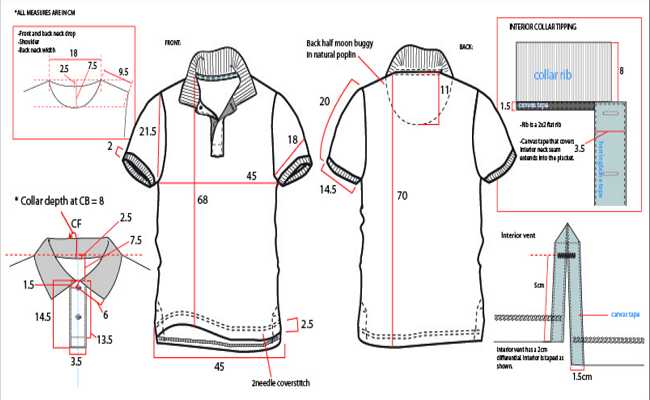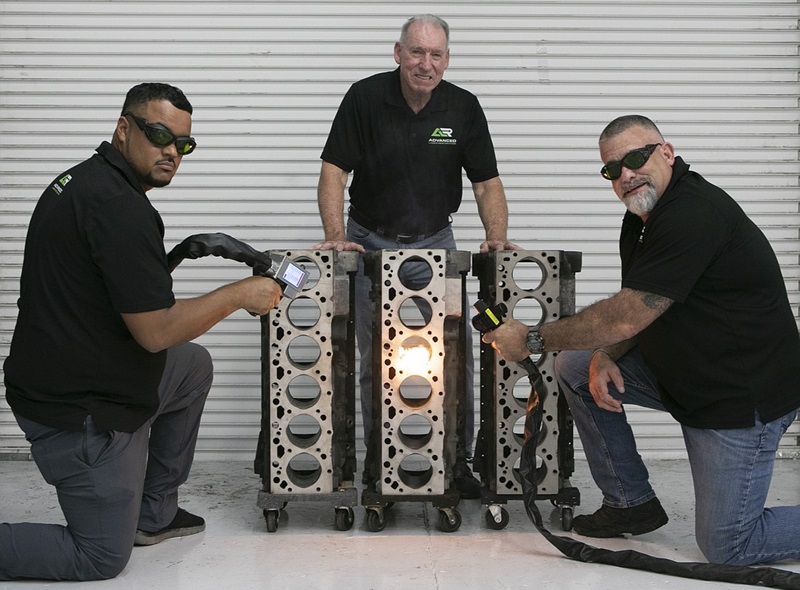Creating a tech pack is one of the most critical steps in product development, especially when working with manufacturers. Whether you’re designing apparel, accessories, or any other product, the tech pack serves as a comprehensive document that communicates every detail of your design. This document helps avoid misunderstandings, delays, and costly mistakes during the production process.
In this article, we’ll explore the tech pack in detail and break down the seven essential elements it should include to ensure success or avoid costly mistakes.
1. Tech Pack: The Power of Detailed Technical Drawings
One of the most essential parts of your tech pack is the technical drawing. Think of it as the visual blueprint of your product, showing the product from multiple angles and in full detail. Without these, manufacturers might misinterpret your design, leading to errors that could result in wasted time, money, and resources.
Why Are Technical Drawings So Important?
- Clear Communication: Drawings allow manufacturers to understand exactly how you envision the product. Whether you’re designing clothing or a tech gadget, visual representations bridge any communication gaps.
- Prevents Mistakes: Ambiguity in designs often leads to costly errors in the final product. Accurate and clear technical drawings ensure that your design comes out as intended.
- Universal Language: Drawings are universally understood, which reduces the chances of miscommunication across language barriers.
Your technical drawings should include:
- Dimensions: Specify exact measurements, from garment length to width.
- Stitching and Details: If applicable, include stitching types, button placements, and other intricate details.
- Multiple Views: Show the product from the front, back, side, and any other relevant angles to cover all aspects.
These detailed drawings ensure that your design is implemented correctly, reducing the likelihood of expensive revisions and mistakes down the line.
2. Tech Pack: The Bill of Materials (BOM)—Essential for Consistency
The Bill of Materials (BOM) lists every material and component needed to create the product. This is a vital part of the tech pack, as it ensures that manufacturers have all the right materials to create your product.
Why Is the BOM So Important?
- Material Sourcing: Manufacturers rely on the BOM to source the appropriate materials. Having it detailed and accurate can prevent delays and reduce the risk of receiving incorrect materials.
- Cost Control: Including detailed quantities and material types helps maintain accurate cost estimates. Without a clear BOM, it’s easy for costs to spiral out of control.
- Avoiding Misunderstandings: A precise BOM helps ensure that the right materials, trims, and components are used, eliminating confusion that could lead to mistakes.
A good BOM should include:
- Fabric Type and Details: The type of fabric (e.g., cotton, polyester), its weight, color codes, and any other important fabric attributes.
- Trims and Accessories: Details about buttons, zippers, labels, or any other embellishments required for your product.
- Material Sources: If necessary, list the suppliers or sources of these materials to ensure consistency.
A comprehensive BOM can prevent costly mistakes, ensuring the manufacturer has everything they need to produce the product accurately and on time.
3. Tech Pack: Construction Details—The Backbone of Your Design
The construction details are where you explain how the product is assembled. This section outlines the methods and techniques used to create the product, including how pieces should be sewn together, what types of seams to use, and other essential construction methods.
Why Are Construction Details Crucial?
- Clear Guidance: If the construction is not specified clearly, manufacturers may interpret the design differently, which can lead to inconsistencies or mistakes.
- Quality Control: Clear construction instructions help ensure that your product is built to last. It also allows you to maintain consistent quality throughout production.
- Preventing Errors: Misunderstandings about the construction process can lead to issues such as incorrect stitching or alignment, both of which can impact the final product’s quality.
Your construction details should include:
- Seam Types: Specify which seams to use, such as flat seams, French seams, or overlock seams.
- Stitching Details: Mention the type of stitching (e.g., double-needle, topstitching) and the stitch count per inch.
- Assembly Instructions: Detail how the product should be assembled, step by step, from beginning to end.
Including these details ensures the manufacturer follows your intended construction process, which directly impacts the final product’s quality and durability.
4. Tech Pack: Accurate Measurement Specifications and Size Charts
Measurement specifications and size charts are particularly important for garments, apparel, or any product requiring precise fit. If you are designing clothing, for example, it is essential to include accurate measurements for each size in your tech pack.
Why Are Measurements So Important?
- Consistent Sizing: Including clear measurements helps ensure your product fits consistently across different sizes.
- Quality Assurance: Accurate measurements are essential for maintaining a high-quality product that fits well and meets customer expectations.
- Avoid Returns: Poor sizing can lead to product returns, negatively impacting both your brand reputation and bottom line.
Key measurements to include in your tech pack:
- Chest, Waist, and Hip Measurements: Essential for garments like shirts, dresses, and pants.
- Inseam Lengths: For pants and trousers, specify the inseam length for each size.
- Fit Type: Specify the type of fit (loose, regular, slim) to help the manufacturer understand the desired look.
If you provide a detailed size chart that specifies exact measurements for each size, you’ll reduce the risk of customers receiving products that don’t fit properly.
5. Tech Pack: Labels, Tags, and Packaging Instructions
When your product is ready for sale, how it is packaged and presented is crucial. The tech pack should include detailed instructions for labels, tags, and packaging. This ensures the final product is presented professionally and according to your brand’s standards.
Why Labels and Packaging Matter
- Brand Recognition: Labels and tags are an essential part of your branding. A well-placed logo or tag enhances the brand’s presence.
- Customer Experience: Proper packaging ensures a positive first impression when customers receive your product. It’s a key element in customer satisfaction.
- Compliance: Many products require specific care instructions or regulatory labels to meet industry standards or legal requirements.
What to include in the labels and packaging section:
- Brand Labels: Placement and design of your brand label (e.g., inside the collar for shirts or on the side seam).
- Care Tags: Washing instructions, fabric content, and other important care instructions.
- Packaging Instructions: How the product should be folded, bagged, or tagged for shipment. Should it be in a polybag, boxed, or hung on a hanger?
By defining how your product should be packaged and labeled, you avoid delays and ensure that the final product is ready for market.
6. Tech Pack: Quality Control Standards to Ensure Excellence
In every tech pack, quality control is paramount. Setting clear quality control standards ensures that your product will meet the quality expectations of your customers. If this section is left vague, you may face defective products, returns, and customer dissatisfaction.
Why Quality Control is So Important
- Consistency: Clear quality control standards ensure that every item produced matches the sample and is up to your brand’s quality.
- Cost-Effectiveness: Preventing mistakes and defective products from reaching the consumer helps you save money in the long run by avoiding returns and remakes.
- Customer Satisfaction: A product that meets the customer’s expectations leads to positive reviews, which helps grow your brand.
Elements to consider for quality control:
- Tolerance Levels: What deviations in size, stitching, or color are acceptable?
- Test Requirements: Any required tests for durability, colorfastness, or material strength.
- Defect Guidelines: Define the standards for what constitutes a defect in your product and how to handle it.
By establishing clear quality control standards, you minimize the risk of producing defective or subpar products, which could harm your business reputation.
7. Tech Pack: Production Timeline and Milestones
A production timeline is another essential part of your tech pack. This timeline outlines all of the milestones in the production process, helping you track progress and meet deadlines.
Why a Timeline is Crucial
- On-Time Delivery: A clear production timeline helps ensure that your product is delivered on time and as expected.
- Project Management: Helps keep everything on track, from prototyping to final production and delivery.
- Prevent Delays: Setting realistic timelines prevents unnecessary delays that could cost you money and lead to missed market opportunities.
Your production timeline should include:
- Prototyping: Set deadlines for the first sample, revisions, and approval.
- Manufacturing: Include time frames for bulk production.
- Shipping: Define when the product will be shipped and when it should arrive.
A detailed timeline ensures that everyone involved in the project stays on track and can meet deadlines.
Conclusion
The tech pack is more than just a document; it is a roadmap for bringing your product to life. By incorporating the seven essential elements discussed in this guide, you are setting yourself and your manufacturer up for success. These elements ensure that your designs are executed accurately and efficiently, leading to a high-quality final product that meets customer expectations.
Remember, a tech pack that includes accurate technical drawings, a clear BOM, detailed construction specifications, size charts, labels, quality control standards, and a production timeline is a powerful tool for any designer. This document serves as a blueprint that will guide your product from concept to finished item, helping you avoid costly mistakes and delays.
If you want to explore how technology and innovation can help you further streamline your processes, be sure to check out Bradley Tech.
FAQ
Q: What is a tech pack?
A: A tech pack is a comprehensive document that outlines all the specifications, materials, and construction details for creating a product.
Q: Why do I need a tech pack?
A: A tech pack ensures clear communication with manufacturers, preventing errors, delays, and costly mistakes.
Q: Can I create a tech pack for any type of product?
A: Yes, a tech pack can be used for any product, including fashion, electronics, and more.
Q: How detailed should a tech pack be?
A: The more detailed your tech pack, the fewer misunderstandings you will face in the manufacturing process.
Q: What happens if I don’t include all the elements in my tech pack?
A: Missing elements can lead to production delays, errors, and defects in the final product.




